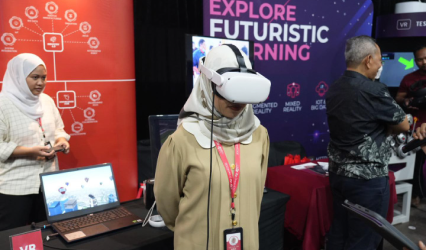
Anis Farhana Amran
Research Associate
Anis is a Research Associate at PNBRI. Her research interests lie in education equity and gender inequalities, particularly how structural barriers intersect to shape access to opportunity. She is especially interested in how these dynamics influence education-to-labour market transitions and broader questions of inclusive development. She holds a BA in Philosophy, Politics and Economics from the University of Southampton. Anis aspires to contribute towards a Malaysia that nurtures and uplifts diverse talents, paving the way for all to realise their potential.
[email protected]Abstract
This article examines recent efforts to increase the participation of underserved communities in Technical and Vocational Education and Training (TVET). In line with the National TVET Policy 2030, these initiatives aim to enhance access to education and training, thereby fostering greater economic participation and promoting socioeconomic mobility.
The discussion centres on initiatives targeting two specific groups: the Orang Asli communities and students from private Tahfiz schools. It highlights how TVET can expand educational and training opportunities for these groups, supporting their economic inclusion.
The article also explores the key challenges that hinder TVET from achieving improved employment outcomes for its graduates. It concludes with potential approaches to strengthen TVET’s role in advancing socioeconomic transformation.
_____________
The recently tabled Budget 2025 reinforces Malaysia’s commitment to broaden access to Technical and Vocational Education and Training (TVET), focusing on the underserved communities (MOF 2024). Aligned with the National TVET Policy 2030, these efforts aim to foster greater earning potentials and socioeconomic mobility. They focus on empowering the underserved youth with TVET’s marketable skills by enhancing access to the TVET track, mainly to (1) the vulnerable communities such as Orang Asli, and (2) target groups including private Tahfiz students (MTVET 2024).
While these initiatives are well-intentioned, significant challenges persist in promoting economic inclusion and better employment outcomes among TVET graduates. For example, recent TVET graduates demonstrate higher employability rates, yet many remain trapped in low-paying jobs that do not utilise their highest qualifications (MOHE, 2024; Khazanah Research Institute 2024).
This article examines Malaysia’s evolving TVET framework, particularly its expansion of access towards underserved communities. It evaluates the effectiveness of TVET training in improving their economic livelihoods and suggests further initiatives to strengthen the ecosystem’s ability to fulfil its promises.
Understanding Malaysia’s TVET Framework
Governments across the world have varying approaches to TVET. In Malaysia, qualifications span from post-secondary to tertiary levels. Based on the current TVET standards (MQA 2020) students may begin their TVET journey as early as age 15 by obtaining the Malaysian Skills Certificate (SKM). From there, they can choose to start working, or progress to the Malaysian Skills Diploma (DKM), the Malaysian Advanced Skills Diploma (DLKM), and eventually, degree programs offered by the Malaysian Technical University Network (MTUN). Alternatively, students may pursue the certificates or diplomas directly after completing their SPM.


TVET qualifications encompass a broad range of practical, industry-aligned fields that cater to diverse skills and career paths (TVET Madani 2024b). Foundational programs at skills certificate level cover areas like hairdressing and basic welding, providing essential skills for entry-level roles. At the tertiary level, TVET diplomas and bachelor’s degrees unlock access to a wider array of fields, catering to both intermediate and specialised areas. Courses range from catering and building construction, to advanced fields like industrial chemistry, precision engineering, and specialised manufacturing techniques – all tailored to meet the demands of complex industries and technology-driven economies.
However, market indices reveal a very different story. Based on approximately 70,000 transactions since 2018, the IQI Malaysia Home Rental Index calculates that Kuala Lumpur’s average rent in 2Q2024 is RM2,863, which is 44% higher than Malaysia’s average of RM1,995 (The Edge, 2024) . Meanwhile, the average rent in Selangor is RM1,899. These translate to about 28% and 19% of household income, respectively.
Budget 2025 saw the largest allocation in the country’s history towards TVET-related initiatives, summing to RM7.5 billion – with a focus on developing the rightly skilled talent to meet the needs of investors under the broader national strategy to attract high quality FDI (BERNAMA 2024). Priorities are given to empowering talents in high-value sectors like semiconductor and the New Industrial Manufacturing Plan (NIMP) focused areas like Maintenance, Repair, and Overhaul (MRO) and Artificial Intelligence (AI) (MOF 2024).
